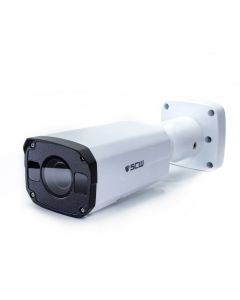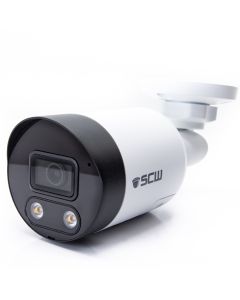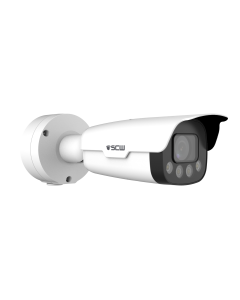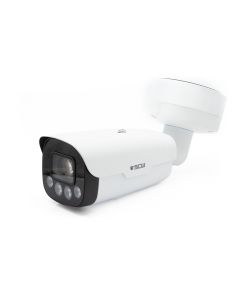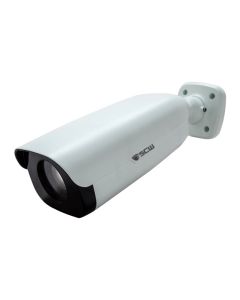License Plate Capture Cameras vs License Plate Recognition Cameras
License plates are very reflective. Recording video of license plates at night is especially difficult and requires a camera uniquely designed for the job. These cameras are called License Plate Capture (LPC) Cameras. SCW has several cameras models that excel at capturing images of license plates, however LPC cameras do not catalog and record the digits on the plates in a way that lets you search by the characters. License plate capture cameras help solve problems like headlight compensation (seen in image).

A License Plate Recognition (LPR) camera is a specialized type of security camera designed to capture and analyze vehicle license plates in real time. Utilizing advanced image processing and optical character recognition (OCR) technology, LPR cameras can accurately identify and record license plate information even in challenging conditions such as low light, high speeds, or poor weather. SCW's dedicated license plate recognition camera is called the Specialist.
License Plate Recognition (LPR) cameras are enhanced with analytical tools, artificial intelligence, and ANPR/ALPR (Automatic Number Plate Recognition) technology, enabling them to recognize and process license plate information automatically enabling advanced features like character search, databasing, or list making. You can several examples of how one might search in this video.
License plate capture is not to be confused with ALPR (automatic license plate recognition) which uses computer vision to read determine whether a license plate is present and where it is in the video and then OCR (optical character recognition) to read the number or letters on that plate.
A License Plate Recognition (LPR) cameras are integral to modern security systems, providing critical data for applications such as automated toll collection, parking management, law enforcement, and access control. By enabling precise and efficient monitoring of vehicle movement, LPR cameras enhance your overall security and operational efficiency in various commercial settings.
The key steps in the LPR process are:
- Image Acquisition: The LPR camera captures images or video of vehicles passing within its field of view.
- License Plate Detection: Using machine learning algorithms, the system detects and locates the license plate in the image. This involves identifying the plate's size, shape, and location within the frame. Character Recognition: Optical character recognition (OCR) technology is used to extract the alphanumeric characters on the license plate. Advanced LPR systems can handle plates from different states/countries and various fonts/styles.
- Data Processing: The extracted license plate number is compared against databases like hotlists of stolen vehicles, parking violations, etc. Relevant data like time, date, and location are also logged.
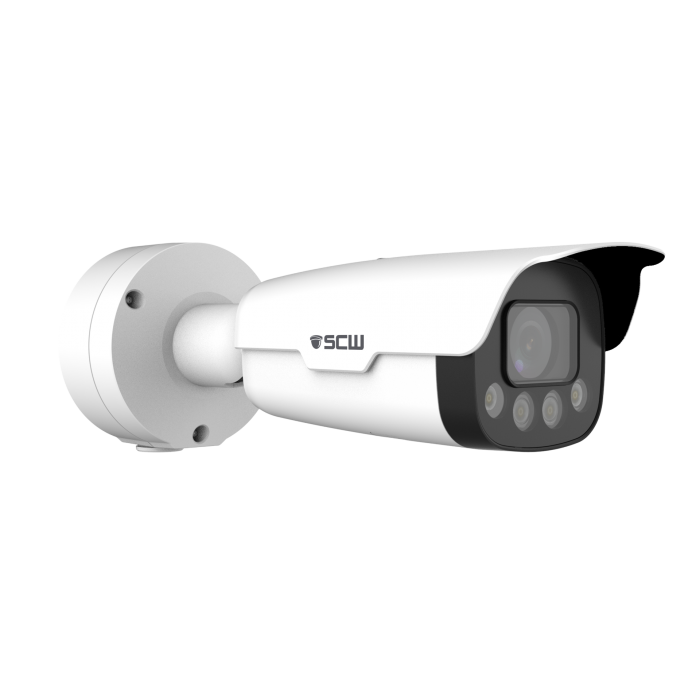
The Specialist
SCW's Dedicated License Plate Recognition Camera
The Specialist is a long range, white light, bullet camera with a LPR software built into it. This camera, when paired with one of our supported NVRs can detect license plates, take snapshots of the plate, and transcribe the plates using optical character recognition. This allows you to easily see plates, search for plate numbers, create lists, and more!
Helpful Guides
- The difference between license plate capture and license plate recognition
- How to consistently capture license plate data
- Picking a Long Range Camera
- What specs make License Plate Capture Better?
- Dealing with Variable Light
- License Plate Operations in Viewstation Desktop VMS
- Specialist 2.0 LPR and NVR Web Login Setup Guide

Lean on the experts
We'd be happy to work up a custom quote or take your floorplan and create a security coverage map.
Get aCustom Quote




